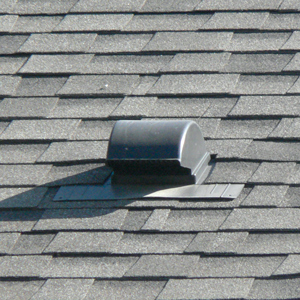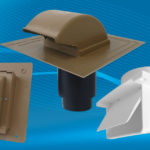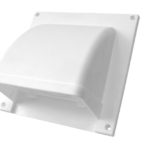 Colder weather means it’s time to think about the condition of roof vents, which have just withstood a hot summer. They were baked by the sun and blasted with UV rays. Now they are faced with the prospect of heavy rain, high winds, snow and hail.
Colder weather means it’s time to think about the condition of roof vents, which have just withstood a hot summer. They were baked by the sun and blasted with UV rays. Now they are faced with the prospect of heavy rain, high winds, snow and hail.
It’s a good idea to get up on the roof for a close inspection of the vents. Make sure all flashing is in place and in good condition. Check the vent for cracks and damage and make sure no animals have entered or blocked the opening with a nest. Keep in mind that metal vents, in particular, are prone to corrosion and damage from winds and hail. Cheap plastic vents are vulnerable to deterioration from UV rays.
If any of the vents are not in the best shape they should be replaced as the integrity of the seal they make with the roof is essential. Any chance of leakage could result in damage to the insulation and ceilings below. Also the ductwork connected to the vent could channel water even farther into the house.
When choosing a replacement vent consider its durability and resistance to damage. Metal vents may not be the best option. Changes in temperature can cause problems at seams from the continual contraction and expansion. If they are in very damp conditions, corrosion can create holes and they can be dented by hail and debris.
PrimexVents offers a line of roof vents that are made from injection-molded plastic resin. This material has many advantages and is specially modified to have a high resistance to UV rays. They have been used in climates that range from -40F to 130F and have a 30-year or more life expectancy.
All our roof vents feature a full 4-inch flange and are molded in one piece to prevent any chance of leaks. A molded bird screen to prevent the ingress of pests is available although the no-screen version is recommended when connecting to a clothes dryer. As they are made of polypropylene, they are molded without seams to protect from leaks, are dent resistant and rust-proof.
Roof Vent Models
There are three models to choose from: RV28, RV20 and RVL28. Each can be used for intake or exhaust purposes, as they are equipped with a damper that can be easily removed for intake applications such as furnaces, fresh air makeup and attic venting.
Because plastic can be easily molded into various shapes, this gooseneck-style hood is designed so that it can be manufactured in one piece. It provides five inches of additional height for maximum snow clearance. It is easily installed with the option of different adapters to fit 4, 5, 6, 7 or 8-inch ducts that simply snap into the hood.
This vent is designed to be aesthetically pleasing and less vulnerable to high winds. It comes with a combination adapter for 4, 5 or 6-inch ducts accommodated by cutting the adapter to the appropriate size.
The RVL28 is a low-profile version of the gooseneck roof jack and uses the same 4,5,6,7 or 8 inch optional adapters. For some customers matching the vent colour to the surrounding shingles is very important. This model is available in eight different colors that complement the exterior aesthetics of a house.



